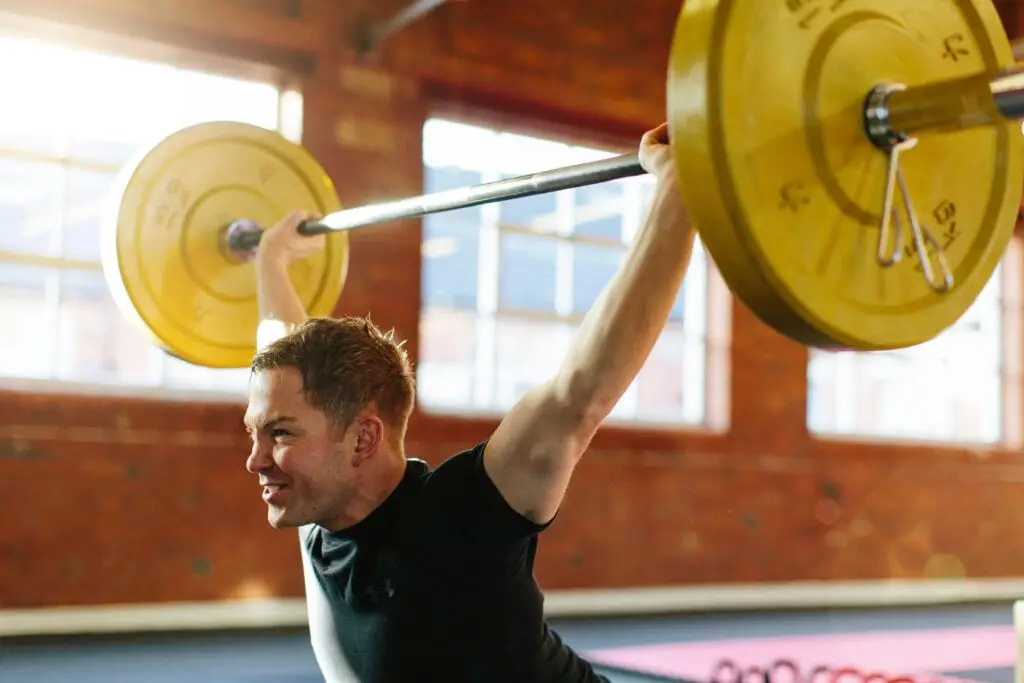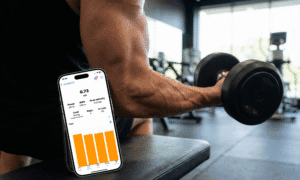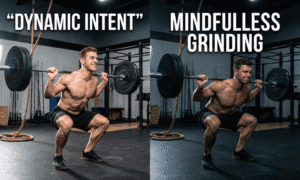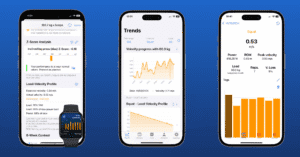When we hear the term PR in fitness circles, it can ignite a mix of emotions—excitement, determination, and even frustration. But what exactly is a PR, and why is it such a cornerstone of athletic training? This blog will unravel the mysteries surrounding Personal Records (PRs), offering insights for beginners and seasoned lifters alike. We’ll tackle common questions, demystify misconceptions, and highlight how tools like Spleeft can help you track, improve, and celebrate your PR journey.
DOWNLOAD SPLEEFT APP NOW FOR iOS, ANDROID AND APPLE WATCH!
What Does PR Weightlifting Mean in the Gym?
PR vs PB: What’s the Difference?

Is it PR or PB lifting?
PR, or Personal Record, and PB, or Personal Best, essentially mean the same thing. Both terms refer to achieving your best-ever performance in a specific activity, like lifting a certain weight or completing a run in record time.
- PR: More commonly used in weightlifting and fitness, especially in the United States.
- PB: Prevalent in sports like running or swimming, particularly in Europe.
So, when someone asks, “Is it PR or PB lifting?” the answer is largely cultural. In gyms and weightlifting contexts, PR is the term you’ll likely hear. It emphasizes record-breaking achievements, which aligns well with the performance-driven nature of lifting.
How Do You Achieve a PR?
What is a PR workout?
A PR workout is a session designed to help you achieve a new personal record. These workouts focus on pushing your limits and typically include:
- Progressive Overload: Gradually increasing weight or intensity over time.
- Peak Performance Drills: Exercises like heavy singles or max-effort jumps to prepare for a PR attempt.
- Recovery Planning: Ensuring adequate rest before PR attempts.
If you’ve ever wondered about the pr weightlifting meaning, it boils down to achieving your personal best in a specific lift. Incorporating pr weight training into your routine is essential for tracking progress and pushing past your limits. A pr in weightlifting serves as a powerful motivator and benchmark, helping athletes assess performance and optimize their training strategies.
With tools like Spleeft, you can track metrics like jump height, barbell velocity, and RSI-Mod, ensuring you’re fully prepared to achieve a PR.
What is a PR exercise?
A PR exercise is any movement or activity where you aim to set a personal record. Examples include:
- Weightlifting PRs: Squat, bench press, deadlift.
- Jump Height PRs: Tracking vertical jumps.
- Cardio PRs: Fastest 5K or row time.
Apps like Spleeft make it easy to track PRs in unconventional exercises, especially for movements involving velocity and power.
Is PR just 1 rep?
Not always. PRs can be broader than just 1-rep maxes:
- Repetition PRs: Your best performance for a set number of reps, such as a 5-rep max.
- Time-Based PRs: Fastest time to complete a specific workout.
- Power-Based PRs: Metrics like peak velocity.
Spleeft tracks various PRs, helping you see progress across multiple dimensions.
PR Metrics and Calculations
What is PR and ER in the gym?
- PR: Personal Record, your best-ever performance.
- ER (Estimated Repetition Maximum): Predicts your 1-rep max based on multiple reps.
For example, if you lift 100 kg for 5 reps, your ER might predict a 115 kg 1RM. Spleeft helps calculate both PR and ER using precise barbell velocity metrics.
What counts as PR?
For a performance to count as a PR, it must:
- Be your best-ever result.
- Be measurable and verified.
- Be executed with proper technique.
Spleeft ensures accuracy by comparing jump heights and other metrics against validated tools like MOCAP technology.
What is a PR example?
Some specific examples:
- Deadlifting 200 kg for the first time.
- Achieving a 65 cm vertical jump.
- Running a sub-20-minute 5K.
PR Progression: How Athletes Use PRs

Do athletes have PR?
Yes, athletes across all sports set and chase PRs to measure progress and refine training. For example:
- Sprinters aim for faster 100m times.
- Weightlifters aim for heavier lifts.
- Basketball players track vertical jumps for explosive performance.
What is your PR supposed to be?
Your PR should reflect your personal peak performance. It’s not about matching someone else’s numbers but about pushing your limits. For example:
- Beginners may aim for an 80 kg squat.
- Advanced lifters may push for 200 kg.
What is a good PR?
A “good PR” is relative to your fitness level and goals. For beginners, it might be squatting bodyweight for the first time, while advanced lifters may aim for double their bodyweight. Spleeft helps personalize this by providing data-driven insights into your capabilities.
How to Achieve and Maintain a PR
What are the requirements for PR?
- Consistency: Regular training.
- Proper Technique: Correct execution is crucial.
- Measurable Metrics: PRs must be quantifiable.
What is the PR level?
PR levels signify milestones:
- Level 1: Initial achievements (e.g., first unbroken pull-up).
- Level 2: Intermediate goals (e.g., 1.5x bodyweight squat).
- Level 3: Advanced benchmarks tailored to elite performance.
What is a PR in the 5K?
A PR in the 5K is your fastest time running 5 kilometers. For recreational runners, this might be 25-35 minutes, while elite runners aim for sub-15-minute times.
What is the normal PR?
There’s no universal “normal” PR—it’s entirely dependent on individual abilities and goals. For instance:
- A beginner might aim for a 50 kg bench press or a 30-second plank.
- An advanced athlete could set their sights on a 200 kg squat or a 15-minute 5K.
The key is to focus on personal improvement rather than comparing yourself to others. Tools like Spleeft allow you to track your progress over time, ensuring that your PR journey remains unique to your capabilities.
What is level PR?
“Level PR” often refers to tiered benchmarks within training programs. These levels help athletes set achievable milestones and progress systematically:
- Level 1: Beginner milestones, like lifting bodyweight or achieving your first unbroken pull-up.
- Level 2: Intermediate goals, such as lifting 1.5x your bodyweight or running a sub-25-minute 5K.
- Level 3: Advanced benchmarks tailored to elite athletes, like achieving a 2x bodyweight squat.
Setting level-based PRs helps maintain motivation and ensures consistent progress.
The Growth of PR as a Concept
Is PR a growing field?
Yes, the concept of PRs has expanded significantly, moving beyond traditional weightlifting into areas like:
- Sports science
- Recreational fitness
- General wellness challenges
With the development of advanced tools like Spleeft, athletes now have access to precise metrics like RSI-Mod and peak velocity, which bring new dimensions to PR tracking. These innovations ensure PRs remain relevant and continue to grow as a valuable measure of performance.
What PR skills mean?
PR skills refer to the abilities necessary to achieve and maintain personal records:
- Discipline: Consistent training and adherence to structured programs.
- Technique: Mastery of proper form and mechanics.
- Mental Resilience: The ability to overcome plateaus and setbacks.
Leveraging tools like Spleeft enhances these skills by providing real-time feedback and actionable insights.
How to be a PR?
Becoming a PR achiever involves:
- Setting Realistic Goals: Start with achievable targets based on your current fitness level.
- Tracking Progress: Use tools like Spleeft to monitor key metrics, such as jump height, velocity, or lifting performance.
- Consistent Training: Follow a structured program with a focus on progressive overload.
- Recovery: Prioritize rest and nutrition to optimize performance.
Is PR worth it?
Absolutely! Achieving PRs offers multiple benefits:
- Motivation: Breaking records fosters a sense of accomplishment.
- Progress Tracking: PRs provide tangible benchmarks to measure improvement.
- Goal Setting: They help structure your training with clear objectives.
The pursuit of PRs isn’t just about numbers—it’s about pushing your limits and growing as an athlete.
The Path to Achieving PRs
How to get PR trained?
Training for PRs involves:
- Structured Programs: Incorporating progressive overload and periodization.
- Tracking Tools: Using Spleeft to measure metrics like RSI-Mod and peak velocity.
- Professional Coaching: Seeking guidance from experienced trainers for better results.
- Recovery Strategies: Adequate rest and nutrition are essential for peak performance.
Is it hard to get PR?
Getting a PR can be challenging, but it’s achievable with persistence. Factors influencing difficulty include:
- Fitness Level: Beginners often achieve PRs more frequently due to rapid adaptations.
- Training History: Advanced athletes face diminishing returns as they approach their physical limits.
Apps like Spleeft make the process easier by providing insights into areas for improvement, helping you optimize your training.
How long does it take to become a PR?
The time required to achieve a PR depends on:
- Experience Level:
- Beginners: May achieve PRs every few weeks due to quick adaptations.
- Intermediate Athletes: PRs may come every 1-3 months.
- Advanced Athletes: May take several months or even years for marginal improvements.
- Training Program: Consistent and progressive training accelerates PR achievement.
Using data-driven tools like Spleeft helps streamline this process by highlighting readiness and areas for improvement.
Which PR is easiest to get?
Some PRs are easier to achieve than others:
- Repetition-Based PRs: Such as a 5-rep max, are less taxing than 1-rep maxes.
- Velocity or Jump Metrics: Progress can be seen more quickly in metrics like barbell velocity or jump height, which are tracked effectively with Spleeft.
When PR Attempts Don’t Go as Planned

Can PR be rejected? Why PR is rejected?
PRs can be rejected for several reasons:
- Improper Form: A poorly executed lift doesn’t count.
- Inaccurate Metrics: Using unreliable tools or measurements invalidates results.
- Unsafe Conditions: PRs achieved at the expense of safety are not valid.
Tools like Spleeft eliminate many of these issues by providing scientifically validated metrics, ensuring that your PRs are accurate and meaningful.
Can PR be lost? Can a PR be canceled?
- Temporary Regression: PRs can be “lost” due to injury, fatigue, or inactivity, but they remain milestones to reclaim.
- Cancellation: A PR might be canceled if the conditions under which it was achieved were invalid (e.g., poor form or inaccurate metrics).
Does PR expire? Can you undo a PR?
- Expiration: PRs don’t expire, but they should serve as benchmarks to surpass.
- Undoing PRs: You can’t “undo” a PR, but setting new ones ensures your training remains dynamic.
What happens when you decline a PR? How do I delete PR?
- Declining a PR: May occur if you feel the attempt wasn’t legitimate (e.g., compromised form).
- Deleting PRs: While you can’t “delete” a PR, you can aim to replace it with a more credible achievement.
What happens if you fail a PR?
Failing a PR attempt provides valuable insight:
- Identify Weaknesses: Analyze areas of improvement, such as technique or strength.
- Adjust Training: Modify your program to address specific deficiencies.
- Recover and Retry: Allow adequate recovery before attempting again.
When to Reject a PR?
Rejecting a PR attempt is essential in certain circumstances to ensure safety, accuracy, and meaningful progression. Here’s when and why rejecting a PR might be necessary:
1. Unsafe Form
PRs should reflect both strength and proper technique. Compromised form—like rounding your back in a deadlift or not achieving full depth in a squat—not only invalidates the PR but also puts you at significant risk of injury. Always prioritize safety over numbers.
2. Inaccurate Metrics
For a PR to count, it must be accurately measured. If tools like measuring tapes, timers, or jump height trackers fail or provide unreliable data, the attempt should be rejected. Apps like Spleeft solve this problem by providing scientifically validated metrics, ensuring every PR you set is precise and legitimate.
3. Fatigue or Injury
Attempting a PR when your body isn’t ready—due to fatigue or injury—results in skewed performance. Fatigue can reduce muscle output and coordination, while injuries can worsen if pushed too far. Both cases make the PR invalid and put your health at risk. Always ensure your body is in peak condition before attempting a PR.
4. External Conditions
Sometimes, the environment itself invalidates a PR attempt. Uneven surfaces for jumps, poor equipment, or even inadequate warm-ups can compromise the results. Rejecting these attempts ensures that your PRs truly reflect your capabilities under ideal conditions.
What is the Rejection Rate for PR?
The rejection rate for PR attempts varies widely depending on several factors:
- Skill Level: Beginners have lower rejection rates since they improve rapidly, often surpassing their old records with consistent training. Advanced athletes, on the other hand, face higher rejection rates as they approach their physiological limits.
- Type of PR:
- 1-Rep Max Lifts: These have higher rejection rates because they require perfect form, strength, and mental focus.
- Endurance PRs (e.g., running a 5K): These tend to have lower rejection rates if proper pacing and training plans are followed.
Studies suggest that rejection rates are particularly high for experienced lifters aiming for marginal improvements. With tools like Spleeft, you can reduce rejection rates by monitoring metrics like fatigue, jump height, and barbell velocity to determine your readiness for a PR attempt.
How Long to Wait After PR Rejection?
The waiting period after a failed or rejected PR attempt depends on the reason for rejection:
1. Fatigue
If fatigue was the primary reason for failure, it’s important to allow 48-72 hours of recovery before retrying. This gives your muscles time to rebuild and your central nervous system (CNS) to recover.
2. Injury
If an injury occurred during the PR attempt, the wait time could extend to weeks or months, depending on the severity of the injury. Prioritize rehabilitation to ensure a full recovery before attempting again.
3. Technique Adjustments
If poor form caused the PR to be rejected, you may need to dedicate additional time to refining your technique. This could involve weeks of targeted training to address weaknesses or mobility issues.
Using Spleeft to Decide When to Retry
Metrics like RSI-Mod and peak velocity in the Spleeft app can indicate readiness for a PR attempt. For example, if your velocity metrics improve steadily after a failed attempt, you’ll know when the time is right to try again.
How Long Do You Wait for PR?
The time it takes to achieve a new PR depends on your training level and the type of PR you’re pursuing:
1. Beginners
New lifters often achieve PRs every few weeks due to rapid strength gains and neuromuscular adaptations. This stage is exciting because progress is quick and consistent.
2. Intermediate Athletes
As athletes move beyond the beginner stage, PRs may occur every 1-3 months. Progress slows because the body adapts to training stimuli, requiring more sophisticated programming to break plateaus.
3. Advanced Athletes
Experienced lifters and athletes may wait several months—or even years—for a new PR, especially if they’re approaching their genetic or physiological limits. At this stage, progress is incremental, but the rewards of breaking a PR are significant.
Tracking Progress with Spleeft
Using Spleeft, you can monitor performance trends over time. Metrics like jump height and barbell velocity allow you to identify small but meaningful improvements that lead to new PRs.
Why Did My PR Get Rejected?
PR rejection can be frustrating, but understanding the reasons behind it is crucial for future success. Common causes include:
1. Improper Execution
If a lift or performance doesn’t meet full range-of-motion standards—for example, failing to achieve depth in a squat or locking out in a bench press—the PR will likely be rejected.
2. Inconsistent Measurement Tools
Using unreliable metrics, such as manually estimating jump height, often leads to invalid PRs. Apps like Spleeft ensure accuracy by employing validated algorithms and tools.
3. Premature Attempts
Attempting a PR before building the necessary strength or endurance usually results in failure. Structured programming and consistent training are essential for success.
4. Overtraining
Excessive training without adequate recovery can lead to fatigue and reduced performance, increasing the likelihood of a failed PR attempt. Tools like Spleeft track fatigue and readiness to help you avoid this pitfall.
5. Environmental Factors
External conditions, such as poor equipment or slippery surfaces, can also interfere with a PR attempt. Ensuring an optimal environment is key to achieving success.
Conclusion
Chasing PRs is a journey of progress, discipline, and self-discovery. While rejection and failure are part of the process, they provide valuable insights into areas for improvement. By leveraging tools like Spleeft, you can minimize rejection rates, optimize readiness, and ensure every PR you set is meaningful and legitimate.
Whether you’re a beginner or an experienced athlete, the pursuit of PRs is about more than just numbers—it’s about pushing boundaries, refining your skills, and celebrating milestones along the way.
Iván de Lucas Rogero
MSC Physical Performance & CEO SpleeftApp
Dedicated to improving athletic performance and cycling training, combining science and technology to drive results.





